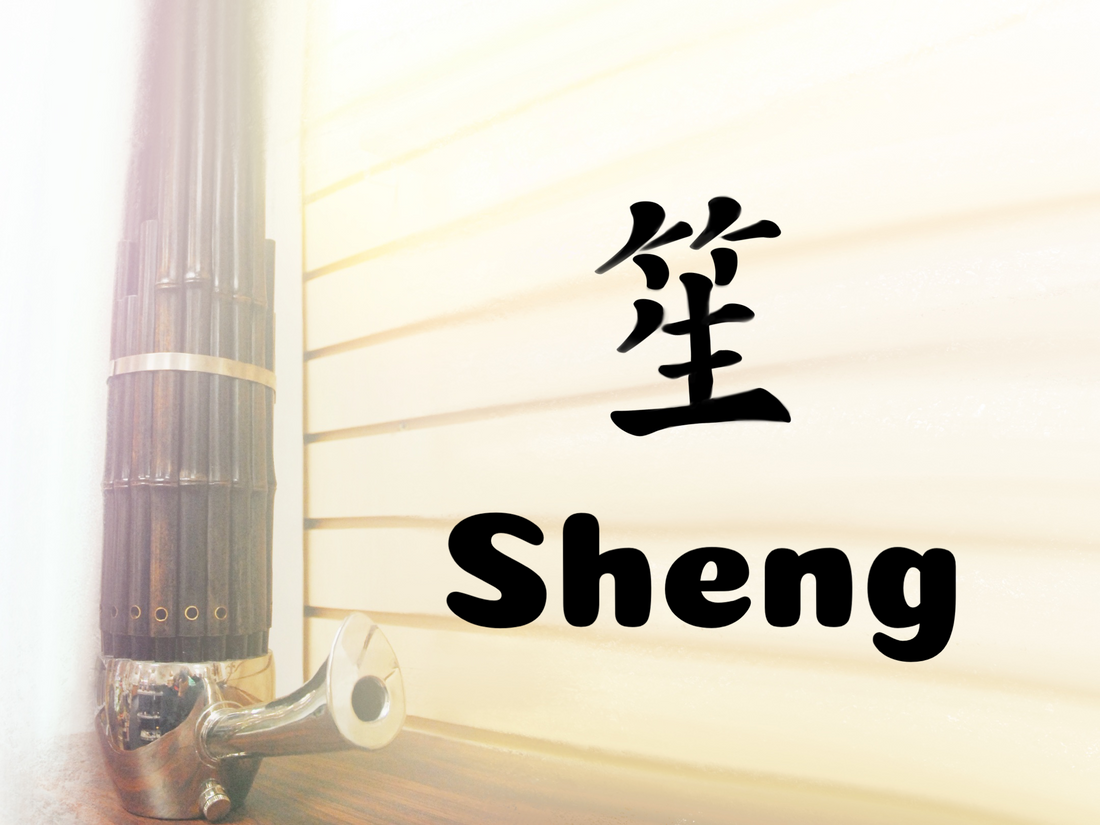The sheng dates back to at least the 12th century BCE, and is one of the first instruments to make use of a free reed. Because the sheng is capable of playing multiple notes simultaneously, it is possible to play parallel fifths, octaves, and to make use of polyphony (with multiple independent melody lines). Furthermore, breathing in and out produces the same note, so it's possible to inhale or exhale while playing without changing pitch, allowing for continuous sound. The clear and metallic tone that the sheng can produce is not typical of other woodwind instruments, but the sound is reminiscent of the harmonica, one of its many descendants.
The sheng inspired the invention of many other free reed instruments, starting around the turn of the 17th century. Some of these include the bandoneon, harmonica, accordion, as well as some church organs. Another descendant of the sheng includes the shō, which originated in Japan during the Nara period (710–794 BCE). The family resemblance is very clear, though the shō tends to be a bit smaller than the sheng.
The sheng is a beautiful instrument, with 17 to 38 pipes (of bamboo or metal) that extend from the windchest (a body made of metal, wood, or gourd), into which a mouthpiece is attached. Each pipe in the mouth organ has a finger hole (and often a key), and at the base each pipe is a free reed, mounted in beeswax. The pipes are said to be structured in such a way as to represent the folded wings of a phoenix (source).
Condensation can collect when warm and moist air comes in contact with a cool surface, which can lead to the reeds clogging during play. To prevent this, the sheng is often left to rest on a warm surface before play (on a brazier or electric burner), or sometimes hot water can be stored in a special chamber in the base of the instrument, to help the instrument stay at body temperature and prevent the reeds from clogging.
Different musical traditions exist in China, including Jiangnan sizhu silk and bamboo music from South China, and a more energetic style of music from the Shandong province of North China, as well as elegant music from the 6th century (video examples of each here). The sheng is most often played today in the context of Chinese classical music, or in the Beijing opera. It is often accompanied by pipa, erhu, suonas, and dizis.
Many different techniques exist in the playing of the sheng, including glissando (sliding across the finger hole of one or more notes at a time), as well as a variety of articulation techniques (video examples here), including:
- Xi Huashe, 'small flower tongue'
- Chu Huashe, 'big flower tongue'
- Bao Huashe, 'erupt flower tongue'
- Hu She, 'blowing flower tongue'
- She Canying, articulating 'sususu'
- Hou Chanying, articulating 'huhuhu'
- Qu Qi, 'sawing wood'
Sheng (笙) takes its meaning from the Chinese radical for "bamboo" (⺮) and the word "life" (生), which roughly translates to "grown from the earth." An older name for the instrument was Hé (和) meaning "harmony" (Dictionary source). It is clear from these descriptors that this instrument holds a deep cultural significance within the Chinese musical tradition. It is also apparent that in order to play the sheng, it is critical to have a good grounding in harmony.
Some video examples of Sheng performances:

